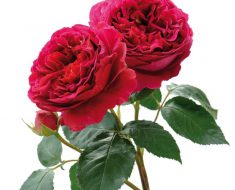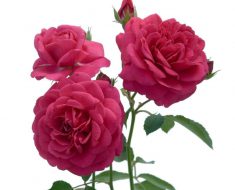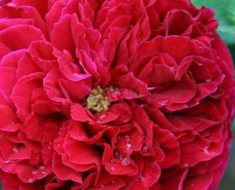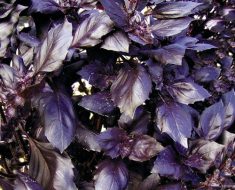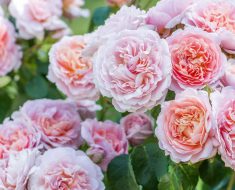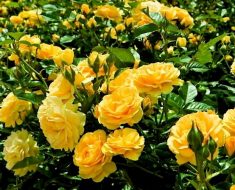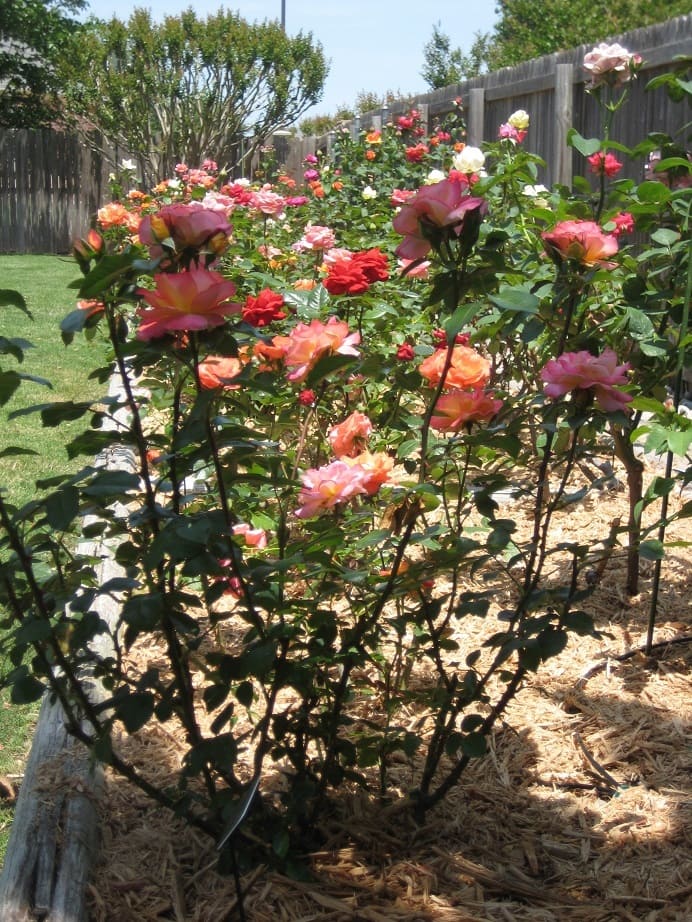Supporting care programs should be for trees and shrubs in the garden. A reliable plant care plan includes checking and detecting problems with insects and diseases, controlling or removing weeds as competitors, and timely watering, mulching, and fertilizing.
Fertilizing trees and shrubs is especially important in urban and suburban areas, where the soil has been changed due to construction. These urbanized soils, as a rule, are densely compacted, saturated with exhaust and other negative gases, poorly drained, and low in organic matter. Even where the land has not been affected, cultivation as part of a maintenance program may be required to increase fertility.
Trees and shrubs in residential and commercial landscaping often fertilize to keep them healthy and attractive. But excessive saturation with useful substances causes growth acceleration, especially in young seedlings. Trees growing on the lawn, as a rule, receive nutrients when the grass becomes fertilizer itself or when it is fed. This is usually enough to support most trees and fertile soil. However, reclamation is desirable on altered soils where not enough nutrients have been added or the topsoil has been removed. Managed urban areas where fallen leaves are collected may also require fertilization to enrich the soil and replenish nutrients.
Fertilizer will not replace environmental factors, such as sunlight and water, which must flow uniformly and freely for green spaces, so that they grow at full strength. Trees and shrubs that are healthy and grow quickly are less susceptible to insects and diseases. Fertilizing increases the resistance of plants to further attacks by certain pests. For example, maples will recover faster after weak lesions by verticillin wilt with regular use of nitrogen fertilizers.
OBJECTIVES OF FEEDING
How and when to fertilize landscape trees and shrubs depends on:
- Self-sufficient goals (to encourage the plant to form new shoots and maintain existing ones)
- Age of trees and shrubs (mostly young plants are fertilized more often, and old ones only support)
- Correction of deformations in plants
WHEN TO APPROVE
The best time to feed trees – late autumn, after the leaves fall off. Fertilizer introduced in the fall, a longer period of time penetrates the soil and the roots more effectively absorb it. Beneficial substances are absorbed by the roots during the winter and are available for the plant in spring. Trees that are growing rapidly must be fertilized annually. Healthy adult trees typically require this once every three to four years.
Fertilizing newly planted trees and shrubs
There is an opinion that new seedlings must be fertilized when planting. But! Young trees and bushes, as a rule, do not need fertilizer during the first vegetation period. These plants, grown in a nursery and have a high level of nutrients, which are enough for the first period of vegetation. Too many nutrients in the first year can damage the tree and reduce its growth rate. After the first year of growth in a constant place give nitrogen “utility”. This will provide a sufficient margin for further growth. Do not apply fertilizer within 30 cm of the tree trunk, because the fertilizer can burn and damage young stem tissue.
When to fertilize
Visual inspection of trees and shrubs is often the best general way to use fertilizers in decision-making. Look for: weak leaf color (pale green to yellow), reduced leaf size and drying out, premature staining and falling of leaves
Soil test
Eighteen nutrients needed for plants: carbon, oxygen, hydrogen, nitrogen, phosphorus, potassium, calcium, magnesium, sulfur and nine trace elements: iron, boron, copper, manganese, molybdenum, zinc, cobalt, nickel and chlorine. Carbon, oxygen and hydrogen take part in the formation of plant cells and the creation of “food”, the first two plants receive from the atmosphere, and the last receives from water absorbed by the roots.
A soil test provides specialized data on potential plant reactions to organics, phosphorus and potassium fertilizers. In addition, it provides a baseline check to determine how many of these elements to add, how many there are and which are missing. Soil sampling can be problematic because most of the nutrients absorbed by the root system of trees and shrubs are in the upper 15-30 cm of soil and their habitat radius can stretch two or three times more than the radius of the corona. Therefore, when determining the nutritional needs of trees and shrubs, it is important to examine not only the soil and their moisture, but also the species, age and vitality of the plants growing on them. Informative will also be data on previous fertilization of soils.
Nitrogen, the most typical representative of soil nutrients, gives the highest growth response. Unfortunately, the results of soil tests or analyzes of the specific nitrogen content are not very reliable. Nitrogen is present in soils in various forms (for example, nitrates, ammonium, urea), and these forms can change rapidly in the soil. And yet, in general, the growth of trees, especially the root system and shoots, leaf color and size, will accelerate with an increase in the presence of nitrogen. Make sure there is no overdose with nitrogen. Do not overdo it with a lot of nitrogen when fertilizing grass, bushes and trees. Nitrates are easily washed out of many soil types and cause problems by polluting the water.
Choice of fertilizers
Assortment of fertilizer types:
- Comprehensive (NPK) and with one dominant element
- Organic and inorganic
- High-speed and delayed action (liquid and granular, for example)
To assist the plant in determining the form of fertilizer to use, it is necessary to take into account such factors: type of flora, season, the desired rate of reaction of plants, a set of measures and their cost, proximity to water sources, as a result of the effect on soil type and pH, future deficiency of components, and soil test results or additional measures sampling methods.
Almost all plants become more beautiful with a “slow” fertilizer with nitrogen produced organically or not organically. Remember that nitrogen is easily washed out through the soil, and phosphorus and potassium are not so, which means less frequent use.
Methods of application
Fertilizers get directly or indirectly to plants. When they receive nutrients from the soil, their roots that extend in it gradually absorb the utility, and therefore are indirectly fed. This way of helping green spaces should be supplemented only when trees and shrubs show signs of deficiency of elements.
Direct use of fertilizers involves mixing them with the ground when loosening or digging around the greenery, spraying, and also pour into the planting pit during transplantation. This is usually liquid or organic nutrition. Another plus is the ratio of time to action and price. If there is mulch, then it is loosened or removed completely when practicing such top dressing for trees and bushes.
The most reasonable and effective way to feed large trees is to disperse granular fertilizers on the surface of the soil and, rain or irrigation water transport nutrients to the roots. Evenly dispersed fertilizers are a guarantee of the result.
An alternative may be the placement of granular fertilizers in holes in the ground, 10-30 cm deep. These holes are placed evenly in increments of 60-90 cm. The same amount of granules / powder is poured into each well … However, this method does not completely provide a uniform effect on all parts of the root system, especially in the surface layers of the soil, where most of the roots are located. A strong concentration of fertilizers in such holes can injure the roots located near the hole, “burn”.
An interesting and unusual method for an ordinary gardener to introduce fertilizing directly into the plant or soil itself is usually used as a commercial method for adding liquid fertilizers to the soil. A special injection rod injects fertilizer directly into the earthen lump under pressure. A little simpler mechanism is already sold in stores (and some craftsmen themselves created such “feeding channels”). Long tubular probes are attached to the garden hose and cartridges with water-soluble fertilizers are injected directly into the root zone of the tree. The tip of the injection needle must be inserted at different depths from 10 to 30 cm into the soil at intervals of up to 1 m. Fertilizers in the form of a ready-made liquid are usually more expensive per unit of nutrients and are often more difficult to use than granular ones.
Pressed fertilizers exist as an additional choice of fertilizer method for trees or bushes. They are compacted and effective only with constantly moist soil. In addition, they do not quite evenly distribute beneficial substances around the tree or the main roots. Another disadvantage is their high cost. Their popularity is based on simplicity and ease of use.
Sometimes a plant needs extraordinary feeding. They are mostly carried out by spraying. The composition of such mixtures most often includes trace elements. They are better perceived through leaves, buds and young shoots. The task of such fertilizers is to quickly influence. Carry out this event in dry, calm weather. A factor that has a great influence on the plant’s absorption of beneficial substances introduced by spraying, high air temperatures. A cloudy day or evening time is best suited for conducting: trees and bushes will absorb the maximum amount of substance during the night.
Micro-injection is a direct injection of the necessary nutrients into the trunk of a tree or shrub. It is common commercial practice to stabilize symptoms. Nutrients can also be placed in gelatin capsules and installed in holes in the tree trunk. Research into the effects of microinjections is relatively limited, and the results are often conflicting. Drilling holes, “implanting” or injecting fertilizers and appearing seals of holes can lead to major distortion of plant tissues or rotting. Injections or implants should only be considered when fertilizing the soil does not help the patient. These measures are seen as short-term treatments for nutritional deficiencies and pest infestations. Ultimately, proper soil and leafy periodic top dressing are the best practices for long-term treatment.
Area for fertilizers
Fertilizers should not be concentrated in the base or trunk of a tree or shrub, but should be applied over the entire root zone of the plant. For trees and shrubs, fertilizers should be applied on an area twice as large as the size of the crown. Since most roots of landscape plants grow in the upper layer of the earth’s surface, digging in fertilizers is not recommended deeply.
Fertilizers and diseased
Many factors influence how well trees and shrubs absorb fertilizers. The most important absorption factors are:
- Form of fertilizers – liquid or non-liquid
- Type of soil – the right fertilizer is selected depending on the composition of the soil (chemical – mineral and micro / macro).
- Poor and loose soils fertilize twice as often, but the concentration of nutrients should be fertilizer should be lowered.
- Humidity and warmth of the soil contribute to better absorption by plants of fertilizers contained in the soil.
- Healthy plants absorb much better benefits from the earth or through the leaves, rather than diseased and damaged ones.
And again about the timing
Remember, fertilize plants should be when plants require it, when it will be most effective, and when plants can easily take them. In late summer and early autumn, top dressing can lead to new growth, which in the end will not be winter-hardy, and summer drought can interfere with the absorption of nutrients, but in spring, autumn, winter (in closed ground or in hot climates) top dressing is the key to good. Dividing the annual norm of nutrients by at least two times, early spring and late autumn (the plant went into a dormant state), will give much more benefits than chaotic stuffing when you have time. If water is unavailable – it has not rained for a long time or if you cannot constantly moisten the soil, do not fertilize at all – the plants will not be able to take nutrients. During the dry season, fertigation will be most beneficial – fertilizing through the drip irrigation system.
Fertilizing trees and shrubs is just one component of general plant maintenance. This type of care may not help the plant if it is under stress from poor aeration of the soil or drainage, saturated soil, inadequate light or air space, or excessive problems with pests. All factors affecting plant growth should be at the optimum level to provide growth energy.
